Editor’s Note: This story was originally published in the Nostalgia Issue of Life & Thyme’s print magazine.
——
The view over my left shoulder is beckoning me to stop for a while. Puffy grey clouds—leftovers from the showers this morning—are broken by rays of brilliant sunshine that are creating jewel-like sparkles on the ocean’s surface. Waves crash against monolithic rocks, breaking and swirling well before reaching the shoreline. Like an enchanting siren, the scenery is beautiful and seductive, easily making me forget the real reason I’m driving along the 101 this morning. But then right on cue, the GPS lady chimes in, telling me I’m almost at my destination, and I can feel myself getting a little giddy. I enter Santa Barbara city limits, my inner child now wide awake. I’m about to get my ice cream on.
Bossie & The Old Dairy
On the corner of Milpas and Canon Perdido Street, there’s a white cow. She’s perched high and proud on top of the offices of McConnell’s Fine Ice Creams, a symbol of time and tradition. Gazing out at the rolling green hillside dotted with expensive homes, Bossie—along with her other ruminant friends—is where the story of McConnell’s begins.
“We’re a dairy, first and foremost. We’re not an ice cream company. That’s the root of McConnell’s,” explains Michael Palmer. The proud third-owners of the family-run company, Palmer and his wife, Eva Ein, purchased McConnell’s Fine Ice Creams in 2012. “The way we approach making our product is there is only one way to make the finest. And that is to control the process every step of the way.”
That process was put into place by founder Gordon (aka “Mac”) McConnell and his wife, Ernestine—a school teacher—who started the namesake company in Santa Barbara in 1949. McConnell was a tinkerer, inventor and visual artist. Before he was drafted and became a glider pilot in Europe during World War II, he was the owner of some of the first health food joints in the 1930s. After the war, McConnell wanted to get back into food. On the advice of a friend, he packed up and moved to Santa Barbara, and he fell in love with the southern tip of California’s Central Coast. McConnell remembered how hard ice cream was to come by during the war, so he and Ernestine decided it would be their business of choice.
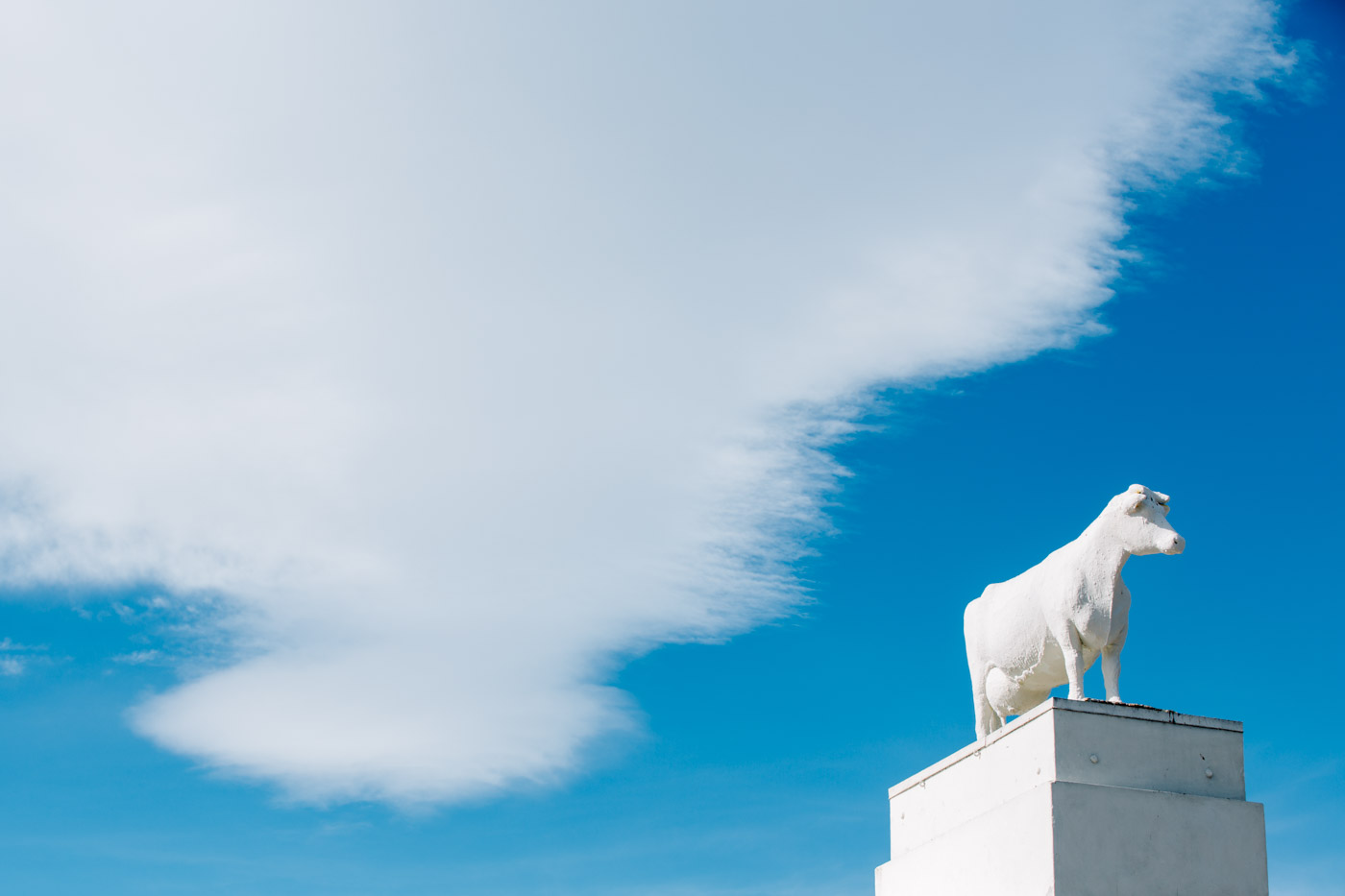

Using ingredients found in and around Santa Barbara, they set out to make their product from scratch, rejecting the mass-production methods sweeping the nation at the time. The husband and wife team worked on recipes at night after Ernestine would return home from school. Even with the state-of-the-art equipment they had purchased, they quickly realized they would not be able to achieve the texture and consistency in the ice cream they had envisioned. McConnell’s solution: take an old Hobart commercial mixer to a local mechanic and have him re-gear the machine so it would turn very slowly. That’s how the McConnell’s method of making fine ice cream originated, and to this day his process is followed. The result of this practice is an incredibly dense and consistently textured ice cream with a velvety mouthfeel.
Gordon McConnell passed away at a young age, and Ernestine was forced to sell the company to a local couple, Jim and Jenny McCoy. They ran McConnell’s for over 50 years before handing the torch over to Palmer and Ein. “We’re shepherding this brand forward,” says Palmer. “We don’t own this legacy, but it is a family business. We’re the third family to carry this brand on our shoulders, and that’s a big responsibility. We’re preserving it for the next people—or maybe our kids.”
Fine Food, Not Ice Cream
Both Palmer and Ein come from food backgrounds—he’s a winemaker and she is a chef with two restaurants in Santa Barbara—which fits nicely with their newly acquired ice cream venture. But like most families who have to make ends meet, Palmer had a day job in brand marketing that kept him on the road most of the year. After a decade in his career, Palmer was burnt out and craving to do something he was truly passionate about. What he didn’t know was that opportunity was about to come knocking in an unexpected way.
“Sometimes events conspire in your life to force change upon you,” Palmer says. “In my case, our house burned in 2008 in a huge wildfire here in Santa Barbara, and that was our come-to-Jesus moment. The moment where you decide, ‘Do I want to continue on the tracks I’m on, or do I want to make a change and do something more meaningful?’”
Palmer was approached by McConnell’s owner at the time, Jim McCoy, and after spending a weekend speaking with him, Palmer decided to take a professional leap. Keeping McConnell’s a family-owned business has been a priority since inception. So when it was time to sell the company, McCoy reached out to Palmer, whom he knew personally, with the confidence that under his care, tradition would be maintained.
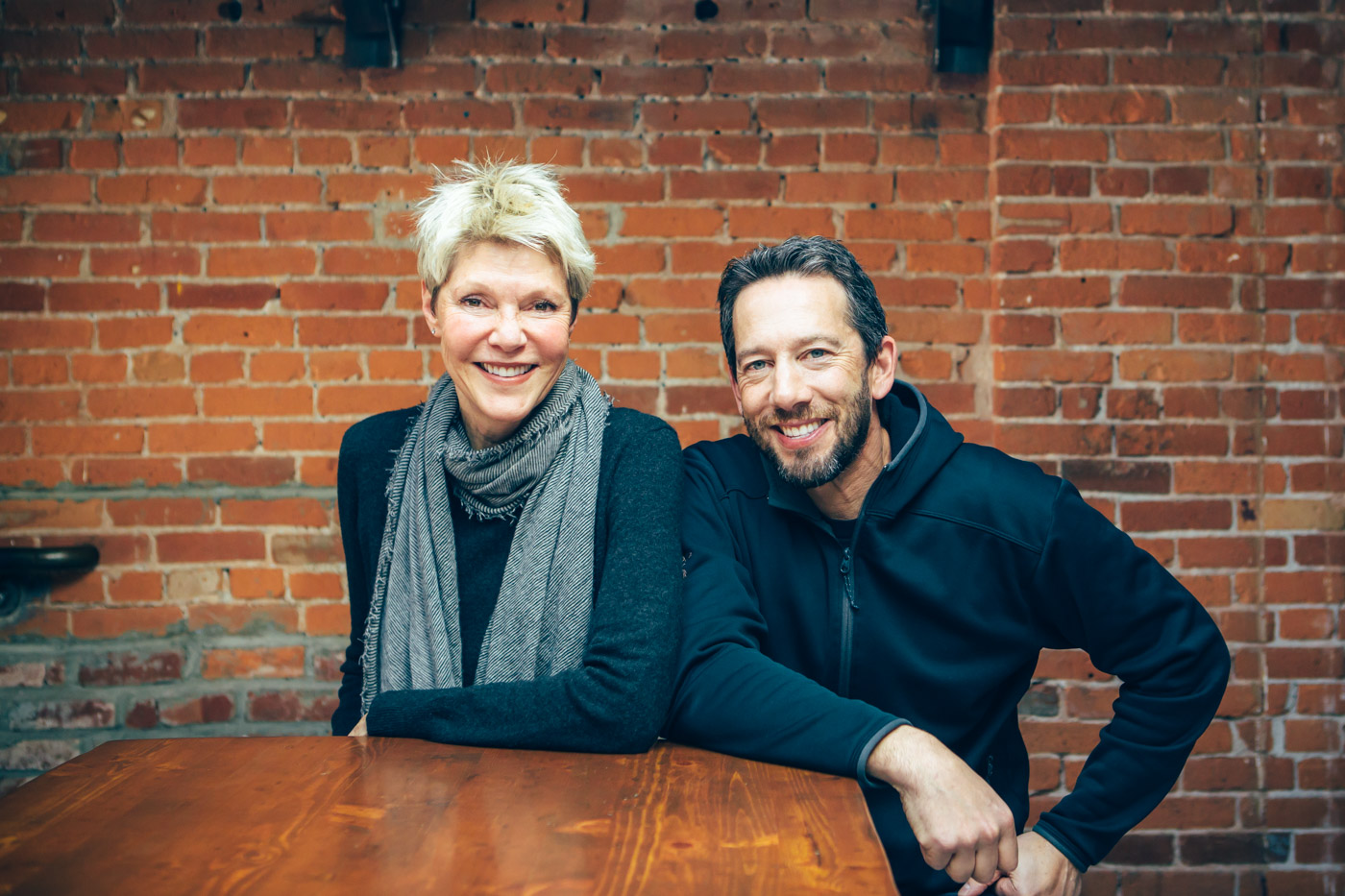

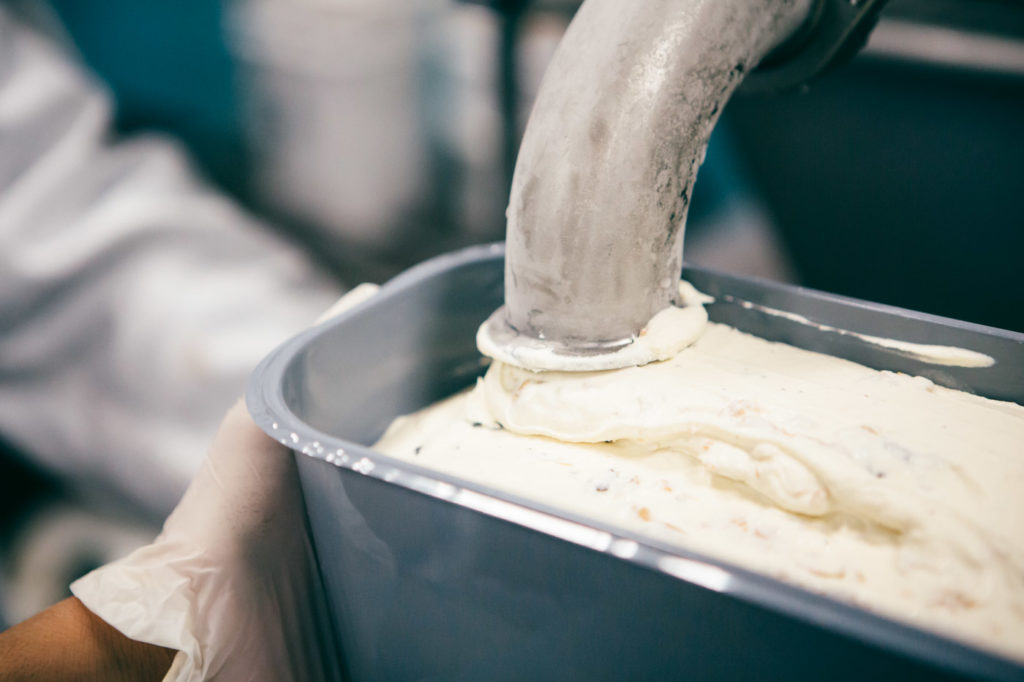

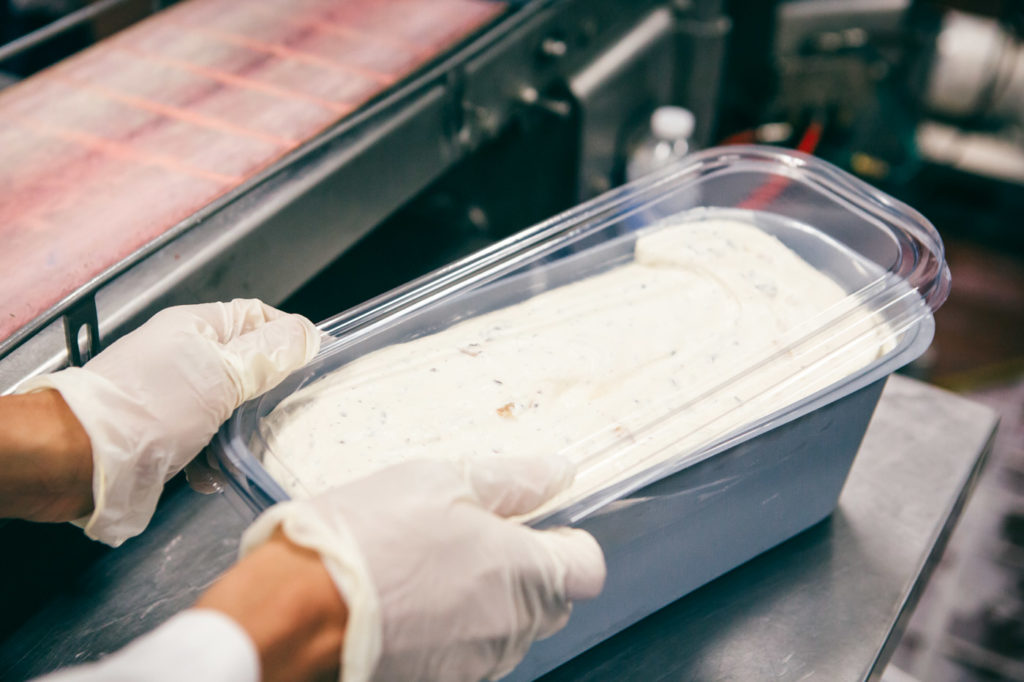
“When McConnell’s became a real possibility, we had a tough choice to make. I’ll never forget coming home to Eva and asking her, ‘What do you think about buying McConnell’s versus re-building our house?’ Of course her answer was, ‘Absolutely not.’ And here we are three-and-a-half years later—things are going great. It’s a life lesson. Some things you do for your heart, and you throw caution into the wind and just hope. It’s been a big Hail Mary pass, and so far it’s been a real adventure. If I was forced to make the same choice again, I’d make it.”
At the time of the purchase, McConnell’s was not in its best state. Palmer and Ein realized the only way they could make the product they wanted was to apply their money and resources into manufacturing and the hardware of the business. “We knew there wouldn’t be a future for this company unless we locked that in. We spent the first year and a half just concentrating on that. That involved a huge effort to rebuild the machinery at the dairy—some of which is more than 60 years old—as well as bringing in new machinery, and learning how that machinery worked and trying to gain some expertise in it. And three years later, we’ve never stopped learning,” says Palmer.
Ice cream aficionados have known about the quality of McConnell’s Fine Ice Creams for years, as did Palmer. “When McConnell’s was good—and I go back decades growing up with it—it was unbelievable,” reminiscences Palmer. “But at times it could be inconsistent too. So our first order of business was [determining] how we [can] make the product we have in our mind’s eye. We knew we had the ingredients and the processes to do that, but we certainly didn’t have the knowledge of ice cream to do that. We happen to be extraordinarily fortunate to have some incredible people at the dairy who have been here for decades who can help us with that. The way we arrived at the product we have now is that it’s a combination of Eva—who has a very specific sense of food, balance and flavor profiles—mixed with the people we work with, such as Mike Vierra, our dairy scientist, who have an equally powerful sense of how milk and cream work as vehicles for flavor.”
Ingredients, Recipes and Process
After a quick chat in the McConnell’s offices, Palmer takes me across the street to the dairy. This is where the magic happens. After donning stylish hair nets, we step through a plastic strip curtain and into the manufacturing room. Large machines doing important ice cream things sit around the room, connected through a series of pipes, hoses and tubes. Workers rinse away white, soapy foam off the red tiled floors—a continual cleansing process to keep things sanitized and squeaky clean. Original baby blue and white tiles cover the walls, adding a vintage vibe to the industrial space.
“I don’t care if you’re making wine, something in a wonderful restaurant, or making ice cream, all food comes comes down to three factors: ingredients, recipes and process,” Palmer explains. “What are the ingredients that are going to make your product the best it can be? How can you use those ingredients to fashion a product that’s the best version of itself? That comes down to how discerning you are. It comes down to palate, to education, and how to combine those ingredients. And from there it breaks down to process. How are you treating those ingredients? We have a very specific way of making ice cream; it’s how this company has been doing things for almost 70 years. It was never about diverging from those ways. It was about dialing into those processes in accordance with our demands and the product we’re trying to make.”
When an ice cream company wants to make ice cream, they’ll do what most ice cream companies do: they will purchase an ice cream base—or mix—from a dairy. McConnell’s, however, does not. After the business switched gears from dairy farming to dairy processing, the herd was sold and the McConnell’s cows went north to graze between Santa Barbara and Paso Robles. But the ice cream company still manages the milk stream, and to this day, McConnell’s gets milk from the descendents of those original McConnell’s cows.
The raw milk and cream arrive at the dairy processing facility every week—sometimes twice a week. It is then pasteurized at high-temperature, short-time (HTST) on-site—the temperature is taken just high enough to kill bacteria, preserve the milk, and lock in flavor. From there, it gets homogenized. The milk is churned and filtered at super high pressure through fine mesh screens; this builds consistency, texture and mouthfeel in the milk. Cage-free organic egg yolks and pure cane sugar are then added to create the ice cream base. It is then matured—or aged—for 24 to 35 hours in large, white refrigerated tanks, where it is cooled down quickly. This allows the 18-and-a-half-percent milkfat base to thicken and the flavors to meld.
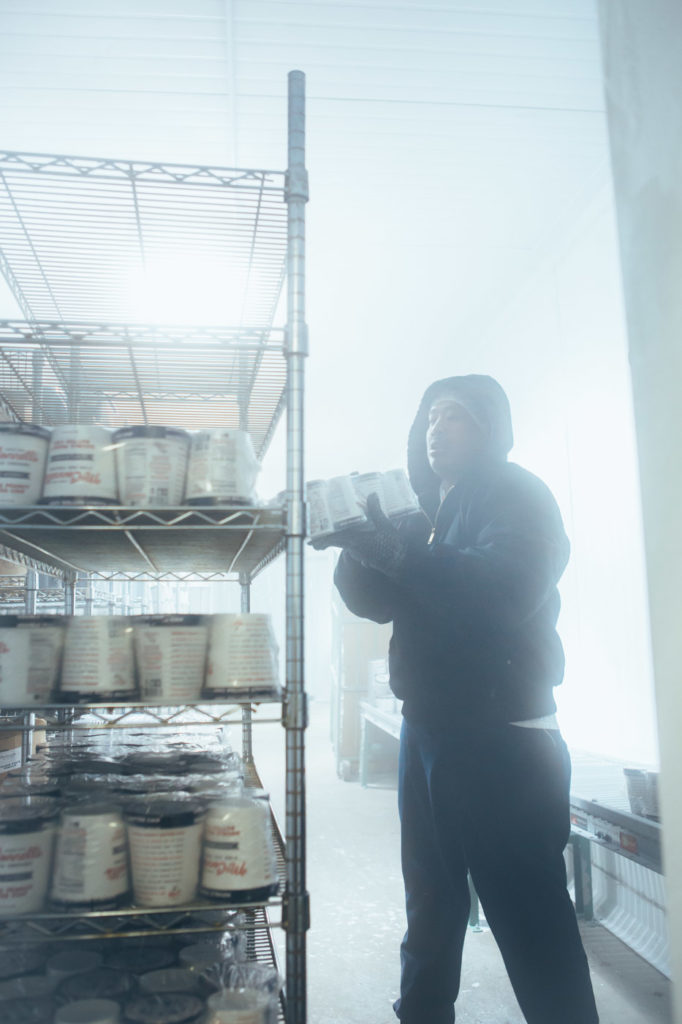
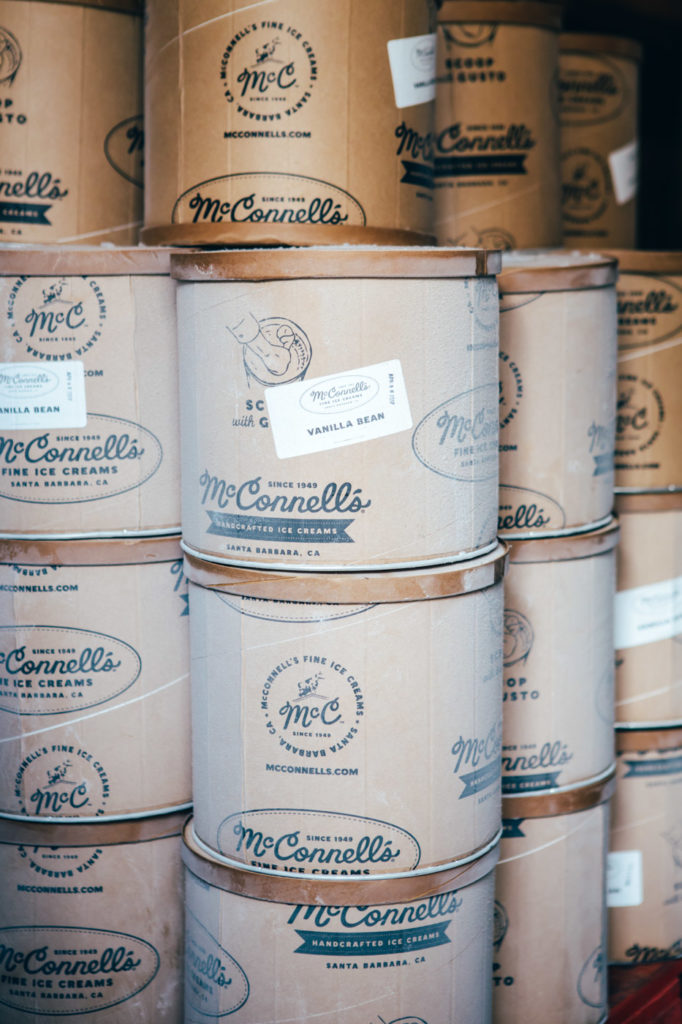

Palmer walks me over to a stainless steel batch tank—where the term “small batch” actually originates. Inside, creamy liquid is being sloshed about. This is the McConnell’s ice cream base. Here, it is flavored for whatever ice cream will be produced. Elsewhere in the dairy, flavorings agents—such as liquid chocolate cocktails or freshly-made peanut butter and jam—are created from scratch and frozen. When needed, specific components are defrosted and introduced into the semi-frozen ice cream base as it’s coming from the batch tank through a freezing machine. Variegates—like liquid chocolate and peanut butter—flow through clear lines and are folded directly into the ice cream. The final combined product exits the machine at 21-degrees Fahrenheit. Chunkier items—like cookies and nuts—are also added right after the ice cream exits the machine. The finished ice cream is immediately put into a negative 40-degree blast chiller. Since McConnell’s doesn’t use any preservatives or stabilizers in their ice creams, the product is very delicate until frozen. Once solid, it’s much less fragile due to its purity and lack of exposure to the air.
“Making a simple product with less ingredients is a much more challenging thing to do than to introduce other ingredients in it to stabilize it,” says Palmer. “It’s much harder to strip things away until you get to the essence of what that product wants to be. And our product wants to be this transcendent, clean ice cream.”
The enemies of ice cream—which is a frozen emulsion at its most basic—are ice and air. When ice cream is being processed, small ice crystals are created in the parts of milk and cream that are water. By eliminating as many of those ice crystals as possible—or making them small enough—the smoothness of the ice cream increases. The same goes for air, which invites bacteria and inconsistencies in texture and in mouthfeel. A dense ice cream that’s incredibly smooth—due to a gentle manufacturing process that creates a relative lack of air and very small ice crystals or—is going to be finer product.
Palmer grabs a freshly made pint of Double Peanut Butter Chip from the blast freezer, and hands me a plastic spoon. The ice cream hasn’t had a chance to freeze all the way through yet, which is fine by me. I scoop out a big chunk of semi-frozen ice cream and take a bite. The flavor of peanut butter—perfectly salted—hits my palate, along with irregular shards of crispy chocolate. The moment is absolutely heavenly.
California’s Central Coast
The genuine flavor of McConnell’s Fine Ice Creams is as much a product of science and artistry, as it is to location. The microclimates of the Central Coast can grow things that other parts of the continental United States can’t. Finger limes, coffee, cherimoyas, papayas and bananas are some of the exotic products that have grown—or continue to grow—in this area. That translates to access of the most amazing ingredients—fruit, nuts and dairy—all of which are the foundation of McConnell’s Fine Ice Creams. “We live in the only place in America where cows graze on grass 365 days out of the year, because they can,” Palmer says with a smile. “We’ve had a drought lately, for sure, but that’s the truth. Cows can graze year round. You’re not going to graze cows in February in Wisconsin.”
In an age where terms like “organic” and “locally grown” have put products on pedestals, they’ve also become a somewhat inauthentic marketing trend. “We use local ingredients because that was the only choice when this company was started almost 70 years ago,” says Palmer. “It’s what you did. So we don’t diverge from that because that’s what we’ve always done.”
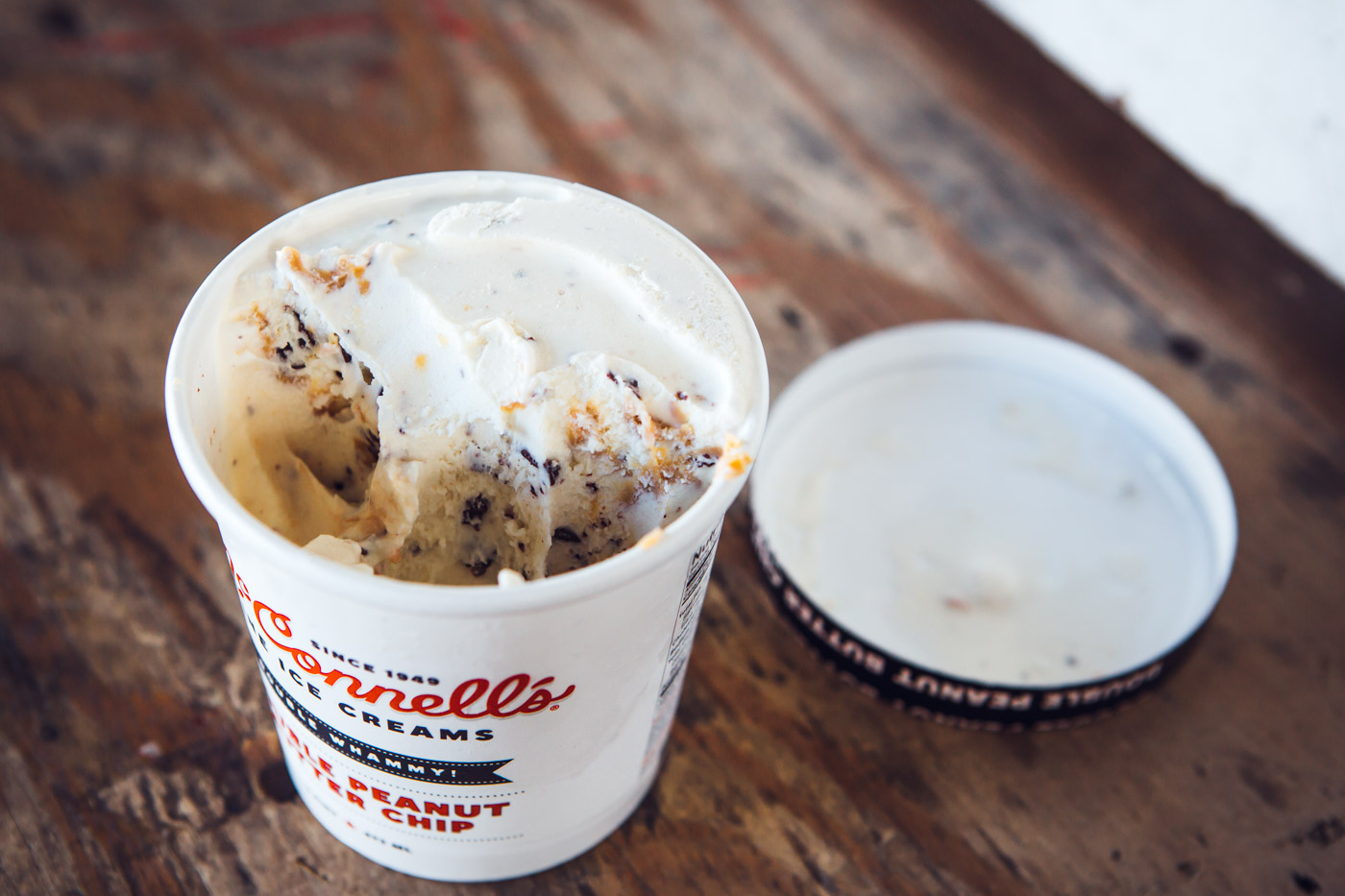
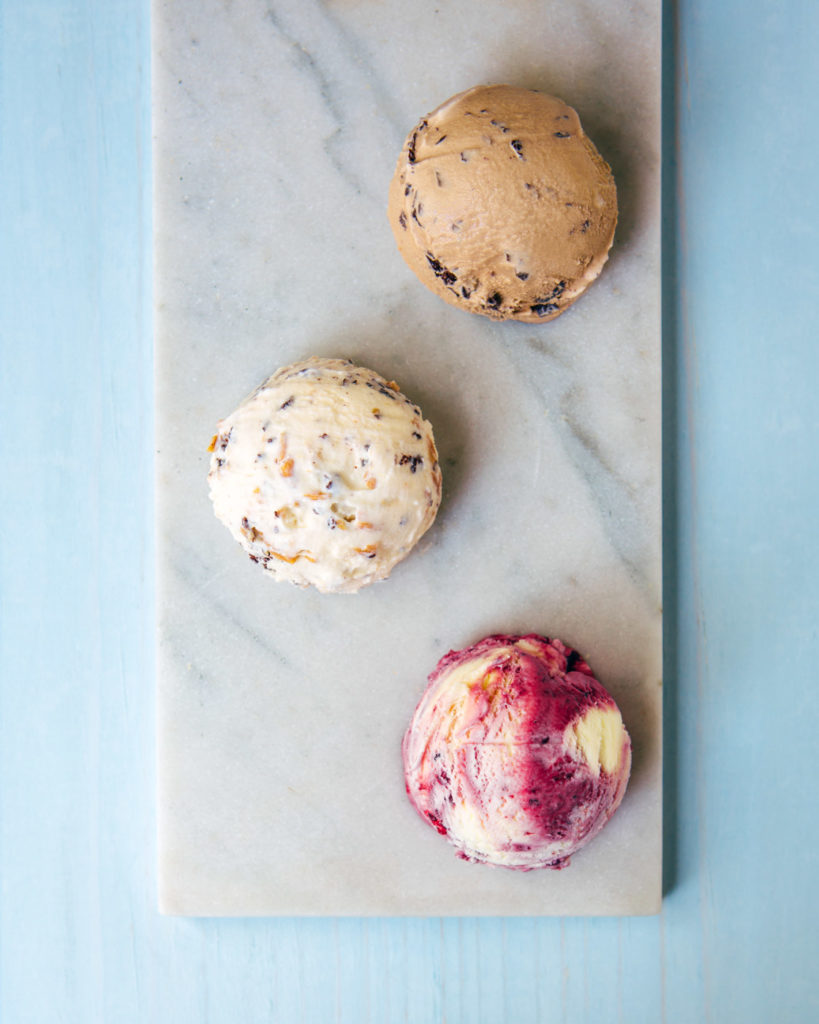
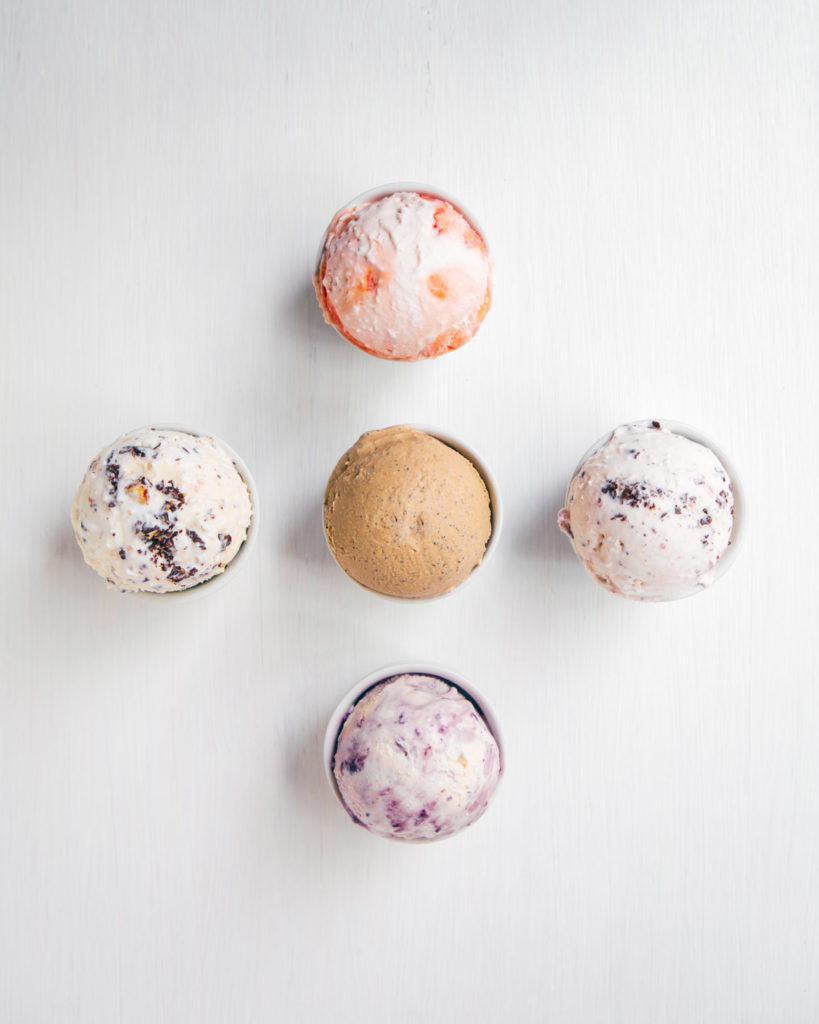
A Chef’s Palate
Ein doesn’t eat much ice cream. In fact, she doesn’t have a palate for sweet things in general, which in turn has greatly influenced the flavor profiles of McConnell’s ice creams. They use a lot less sugar in their products, because that’s how Ein likes her food.
Recipes are not just about following a step-by-step method. Rather, it’s the palate of the person making those recipes—and using the ingredients—that’s most important. “From a flavor development standpoint, without making it too simplistic, I prefer to do spins on classic—and things that are tweakings of really great, solid ideas instead of coming up with something really radical,” says Ein. “It’s also how I cook. Less is more. Simplicity is fantastic. Get a great ingredient and get out of the way.”
When Ein first stepped into the McConnell’s kitchen, she decided she wanted to make a new flavor—something that hadn’t been done in a decade. “They had real classic flavors that we still have. But it was about taking McConnell’s into the 21st century and coming up with flavors that speak to the food world, and to new generations of people actually spending big dollars on ice cream. So that was really fun,” says Ein. “I had never made ice cream until we bought McConnell’s. I come from the food world in cooking, but I didn’t understand ice cream. It was actually really exciting, because I didn’t know what I was doing. I could try things because I didn’t realize they weren’t [considered] possible—and some of those ideas worked.”
With flavors like Boysenberry Rosé Milk Jam, Cardamom and Gingersnaps, Eureka Lemon and Marionberries, and Sea Salt Cream and Cookies—a mere handful of the more than 35 varieties of ice cream (not including the array of seasonal flavors) produced by McConnell’s—Ein’s experimentation has definitely paid off. I’ve had the extreme pleasure of (repeatedly) trying multiple flavors of McConnell’s Fine Ice Creams—each one as rich and gloriously smooth as the next, with clear and pronounced flavor profiles. I can say, without doubt, there is an ice cream flavor for every discerning palate at McConnell’s.
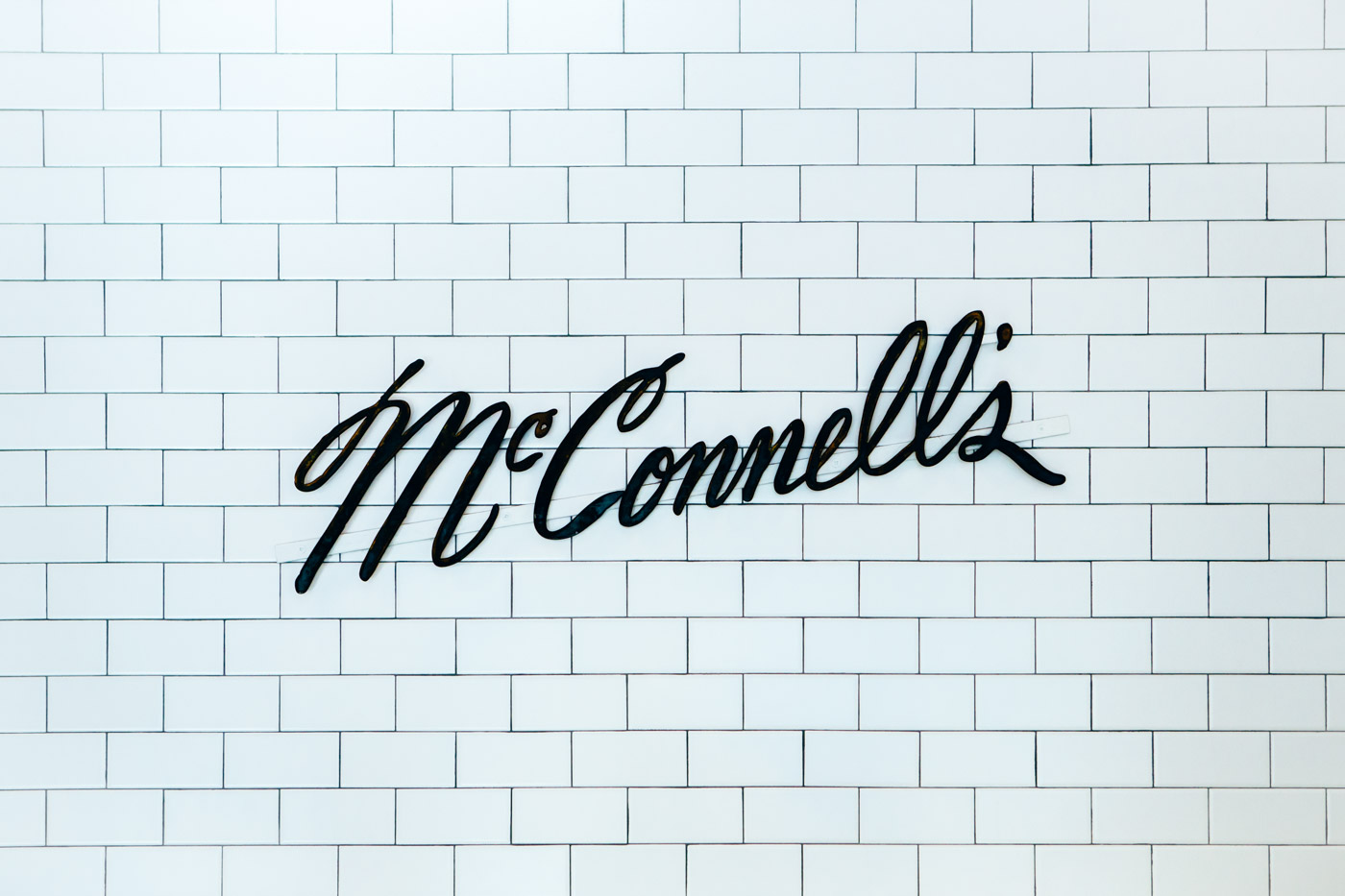
The Transcendent Experience
The local retail arm of McConnell’s Fine Ice Creams can be found in Downtown Santa Barbara, on popular State Street. White subway tiles, exposed brick and warm wood create a cozy atmosphere—the perfect spot for a chat and several bites of something creamy and delicious, or freshly-baked pastries.
With a customer base that ranges from five to 80, McConnell’s is looking to deliver not only the finest ice creams, but also an emotional experience. “The thing about ice cream that’s so wonderful—and a huge part of why we’re involved—is ice cream is one of the very few products that hits you in your kid spot,” says Palmer. “We all have these sense memories of being young and eating ice cream with our families and friends. And whether or not those products we were eating as kids were fabulous or not, those experiences are equally as profound and powerful in our memory. That’s what we’re going for—we’re trying to create those experiences.”
Palmer, Ein and I are seated on the mezzanine level, surrounded by vintage photographs of McConnell’s from its early days. There’s no hint of pretentiousness or fussiness here. Instead, there’s a sense of ease and familiarity to this brand, and to Palmer and Ein. To say the couple is just friendly is an understatement. Their down-to-earth personalities will make you want to immediately adopt them into your circle of friends, and their knowledge and love of food—and ice cream—is contagious. But don’t let their relaxed personalities fool you. Underneath all that charm are driven individuals who are as strict about their work ethic as they are affable. And they know they wouldn’t be here—three and a half years after purchasing McConnell’s—without the support of their employees and community.
“There’s a lot of heart in this company,” Palmer says with appreciation in his voice. “Before, McConnell’s was a fabulous ice cream company. Now, McConnell’s is a fabulous community. It’s a community of people involved with the company and the people that work with us every day. Not just the people that make the ice cream, but the people that also work in our stores.
“It’s never been our goal to be the biggest ice cream company because by its very nature, the biggest will more than likely never be the best,” explains Palmer. “When you want to be the biggest, you’re forced to make choices that maybe don’t align with making the finest product. And our goal is to make the most transcendent, finest ice cream in the business.”





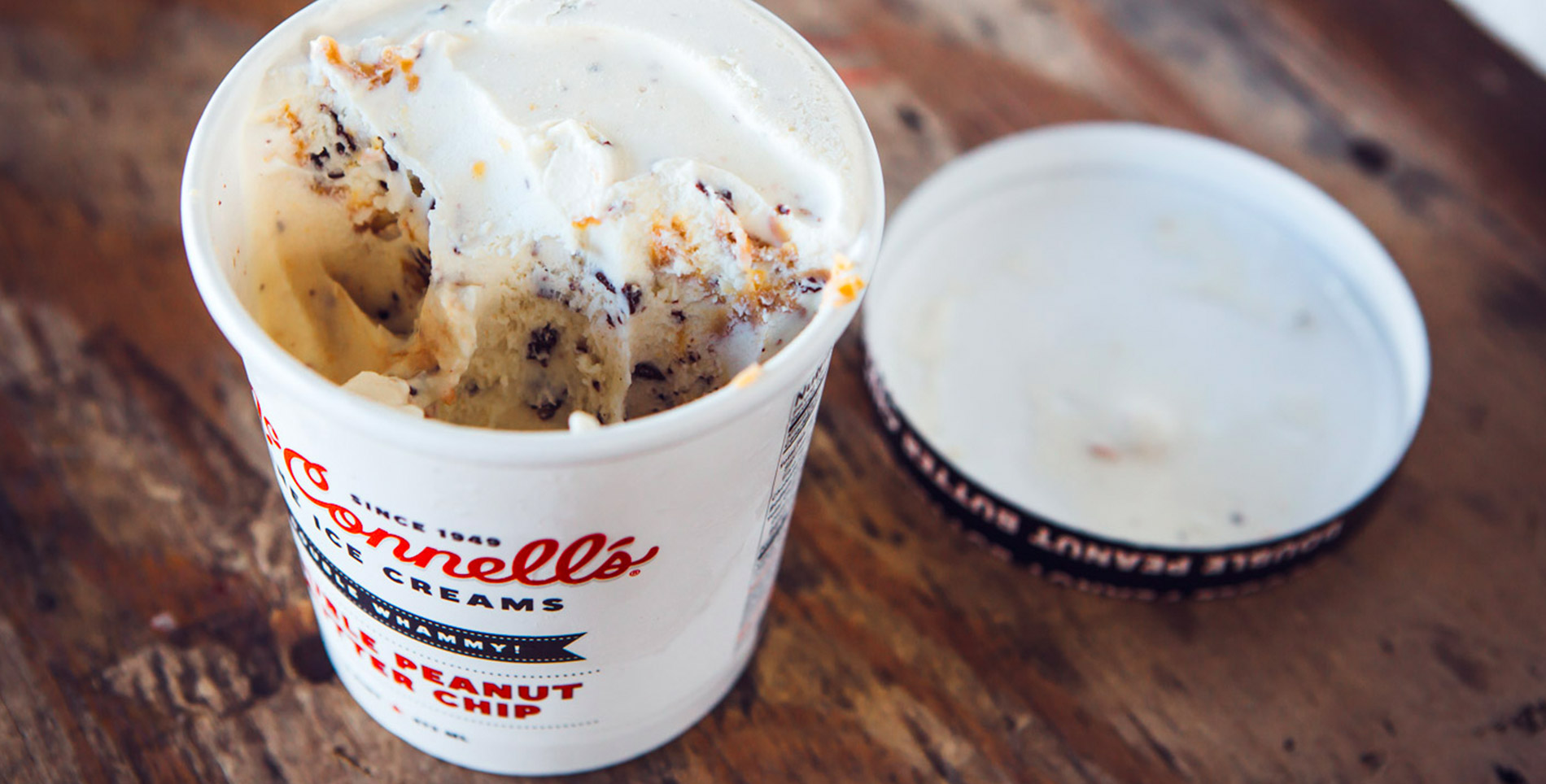

Our comments section is for members only.
Join today to gain exclusive access.